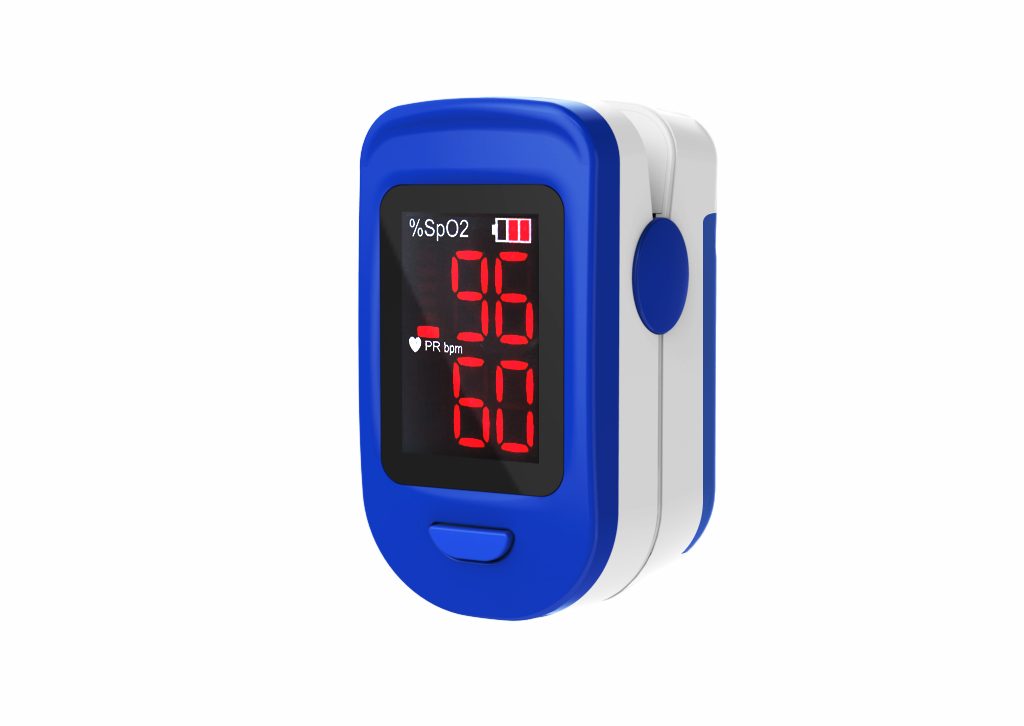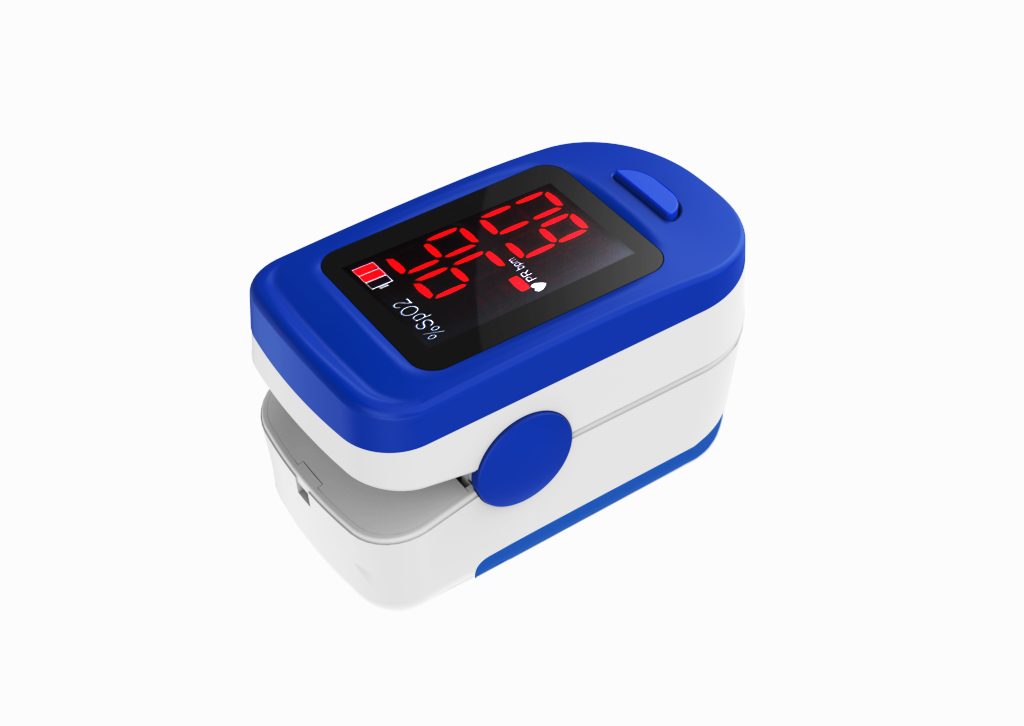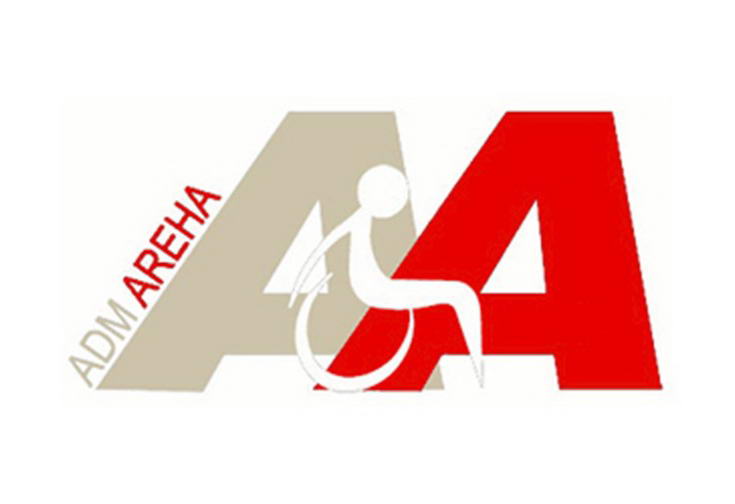An oximeter, or pulse oximeter, is a simple, immediate and non-invasive device used to measure and monitor both oxygen saturation in the haemoglobin present in peripheral arterial blood and the heart rate of the patient.
Let us look at the details:
What does it look like?

The device is formed of a sensor, usually pincer shaped, and a calculation unit that processes the data and displays it on a monitor.
It can be used on children, adults and the elderly, both at home and by a doctor or in hospital. It is positioned on the fingertip, usually on the left index finger, or alternatively one the earlobe or on a toe if being used on a newborn baby.
What is it used for?
It measures the level of oxygen in the blood and thus helps to understand whether the lungs are obtaining a sufficient quantity of oxygen through breathing.
An oximeter, or pulse oximeter, is normally used on patients with asthma, chronic bronchitis, chronic obstructive pulmonary disease or pneumonia.
It can be used to assess haemoglobin saturation in patients with sleep apnoea syndrome, people exposed to environmental pollution or smokers.
In the Covid-19 pandemic…
In the Covid-19 pandemic, it can also be useful in monitoring the level of oxygen saturation in patients presenting symptoms such as fever, a cough or dyspnoea (shortness of breath).
One of the most well-known and feared symptoms of the coronavirus is, in fact, its ability to compromise functioning of the deepest airways, causing serious and atypical pneumonias.
The oximeter can therefore be a precious ally in home monitoring of breathing difficulties in people who are self-isolating and fear they may have contracted the virus.
How is it used?
A measurement is taken by switching on the device, opening the pincer sensor and inserting the finger into it, as far as it goes, in a manner that the LED lights up over the central part of the fingernail. Within a few seconds, the device will indicate the oxygen saturation level and the heart rate.
How does it work?
The operating principle of a pulse oximeter is based on spectrophotometry. The sensor has two light-emitting diodes on one arm of the pincer and a light detector on the other arm. The two diodes emit beams of light at precise wavelengths within the red and infra-red range.
As the light waves travel, they are absorbed by the haemoglobin: if this is bonded to oxygen (oxyhaemoglobin – HbO2), it absorbs mainly in the infra-red light, whereas if it is not bonded (Hb), it absorbs mainly in the red light.
Using this difference in absorbance between the haemoglobin bonded to oxygen and the one not bonded, by measuring and analysing the difference between the quantity of radiation light emitted by the diodes and the light detected by the detector, the calculation unit processes the data and provides the oxygen saturation value, which is displayed on the monitor.
What are oxygen saturation levels in the blood?
Oxygen saturation in the blood is an indicator that helps establish how well a person is breathing. Normal saturation levels are above 95%.
Values below 95% are a sign of hypoxia, which is considered light with values between 91% and 94%, moderate with values between 86% and 90% or serious with values of 85% or under.
What is the best way to ensure optimum measurement?
For the device to take the measurement correctly, the finger must be warm, with no peripheral vasoconstriction and fingernails that are not too long. Nail polish can interfere with measurement, particularly if it is purple, black, green or blue, as can “gel nails” or false nails.
What are the main advantages?
A pulse oximeter is a precise and reliable device that can be used simply and easily in the home. It can be used to monitor both heart rate and oxygen saturation levels through rapid and completely non-invasive measurement.
The Moretti range of products includes various types of pulse oximeter.

There is a more compact range, suitable for use at home, with an LCD or LED display. These are small, light and easy to carry and guarantee precise and reliable readings.
There is also a hand-held range with clip sensor, suitable for use in specialist clinics and hospitals for transfer of patients or home care. These are light, ergonomic and precise and guarantee professional and reliable measurement.
Consult our product catalogue or ask at your usual orthopaedics and medical supply store for more information.










